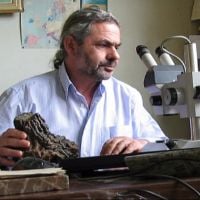Archaeology and Environmental Anthropology
A special issue of Heritage (ISSN 2571-9408).
Deadline for manuscript submissions: 31 August 2024 | Viewed by 175
Special Issue Editors
Interests: geoarchaeology; geochronology; archaeometry; environmental sciences; palaeoseismology; landscape evolution
Interests: sea-land interaction; archaeomining/metalluurgical pollution; speleoenvironments; natural radioactivity; climatic evolution/crisis; lost harbours
Special Issue Information
Dear Colleagues,
1. Introduction:
Since Palaeolithic times, humans have been significantly influenced by the natural environment, seeking shelter in caves and natural crevices for security, family creation, food storage, ritual activities, ancestral burials, and child protection, among others. Their reliance on a wide range of natural materials, including flint, obsidian, other hard stones, bone, wood, coal, painting ochres, and ores, played a crucial role in their lives and evolution.
Today, archaeology and environmental anthropology are considered interdisciplinary fields that hold significant importance in understanding the complex relationship between human societies and the natural environment throughout history. By studying human interactions with the environment, these disciplines offer invaluable insights into the practices of past societies and the reciprocal impact between societies and their surroundings. Recognizing the growing interest in this research area, we are delighted to announce this Special Issue (S.I.), entitled “Archaeology and Environmental Anthropology”. This Special Issue aims to further explore the interconnectedness of human societies and the natural world.
2. Aim of the Special Issue and how the subject relates to the journal’s scope.
The aim of this Special Issue is to foster a comprehensive exploration of the intricate interplay between archaeology and environmental anthropology by utilizing indicated archaeometric methodologies and approaches. We aim to bring together a diverse collection of research articles that use cutting-edge analytical techniques to unravel various aspects, including cultural practices, adaptations, and the influences of environmental factors, seeking to delve into the dynamic relationships between past societies and their natural environment.
By investigating the dynamic interactions between human communities and their surrounding environment through the lens of archaeometric techniques, we seek to shed light on the ways in which past societies adapted, exploited, and transformed their natural surroundings. Additionally, we aim to understand how environmental changes influenced and compelled societies to adapt and transform their practices in response.
Aligned with the journal's scope, which focuses on the interdisciplinary study of heritage from various perspectives, this Special Issue will facilitate interdisciplinary dialogue and promote a holistic understanding of heritage. It emphasizes the crucial role of archaeology and environmental anthropology in unravelling the complex relationship between human societies and the natural environment throughout history.
3. Suggested themes and article types for submissions
For this Special Issue, we invite original research articles and reviews that delve into a wide range of themes related to archaeology and environmental anthropology, with a particular focus on the application and advancements of archaeometric techniques. Potential research areas include, but are not limited to, the following:
- Investigations using archaeometric techniques to study human-environment interactions;
- Paleoenvironmental reconstructions to understand landscape changes and their influence on past societies;
- Applications of geochronological techniques in the context of paleoenvironmental studies;
- New methodological approaches utilizing analytical techniques and chronometric methodologies for investigating human-environment interactions and reconstructing past environments.
We look forward to receiving your contributions.
Dr. Evangelos Tsakalos
Dr. Yannis Bassiakos
Guest Editors
Manuscript Submission Information
Manuscripts should be submitted online at www.mdpi.com by registering and logging in to this website. Once you are registered, click here to go to the submission form. Manuscripts can be submitted until the deadline. All submissions that pass pre-check are peer-reviewed. Accepted papers will be published continuously in the journal (as soon as accepted) and will be listed together on the special issue website. Research articles, review articles as well as short communications are invited. For planned papers, a title and short abstract (about 100 words) can be sent to the Editorial Office for announcement on this website.
Submitted manuscripts should not have been published previously, nor be under consideration for publication elsewhere (except conference proceedings papers). All manuscripts are thoroughly refereed through a single-blind peer-review process. A guide for authors and other relevant information for submission of manuscripts is available on the Instructions for Authors page. Heritage is an international peer-reviewed open access monthly journal published by MDPI.
Please visit the Instructions for Authors page before submitting a manuscript. The Article Processing Charge (APC) for publication in this open access journal is 1600 CHF (Swiss Francs). Submitted papers should be well formatted and use good English. Authors may use MDPI's English editing service prior to publication or during author revisions.
Keywords
- geoarchaeology
- palaeoenvironment
- geochronology
- archaeometric techniques
- landscape archaeology
- human–cave dynamics
- past climatic changes–implications for ancient societies
- human–environment interactions






